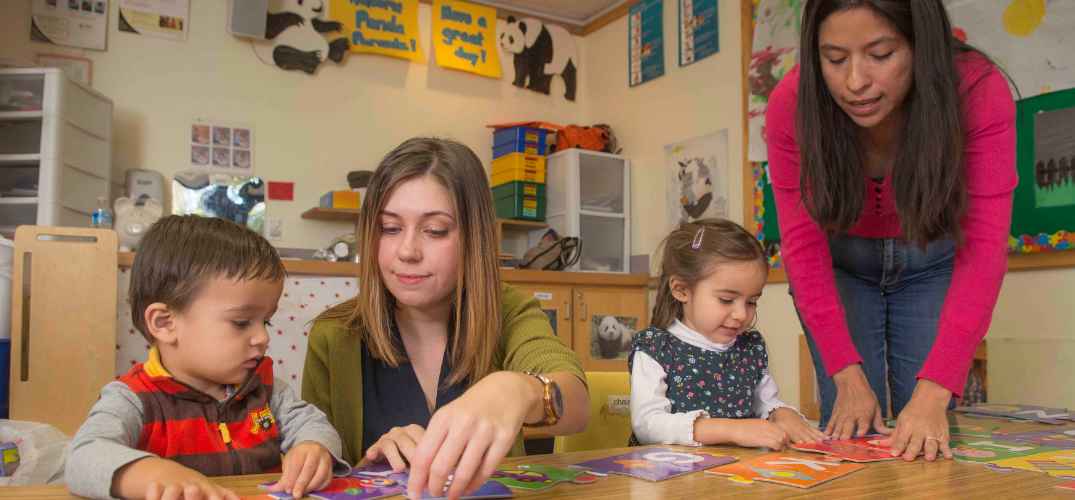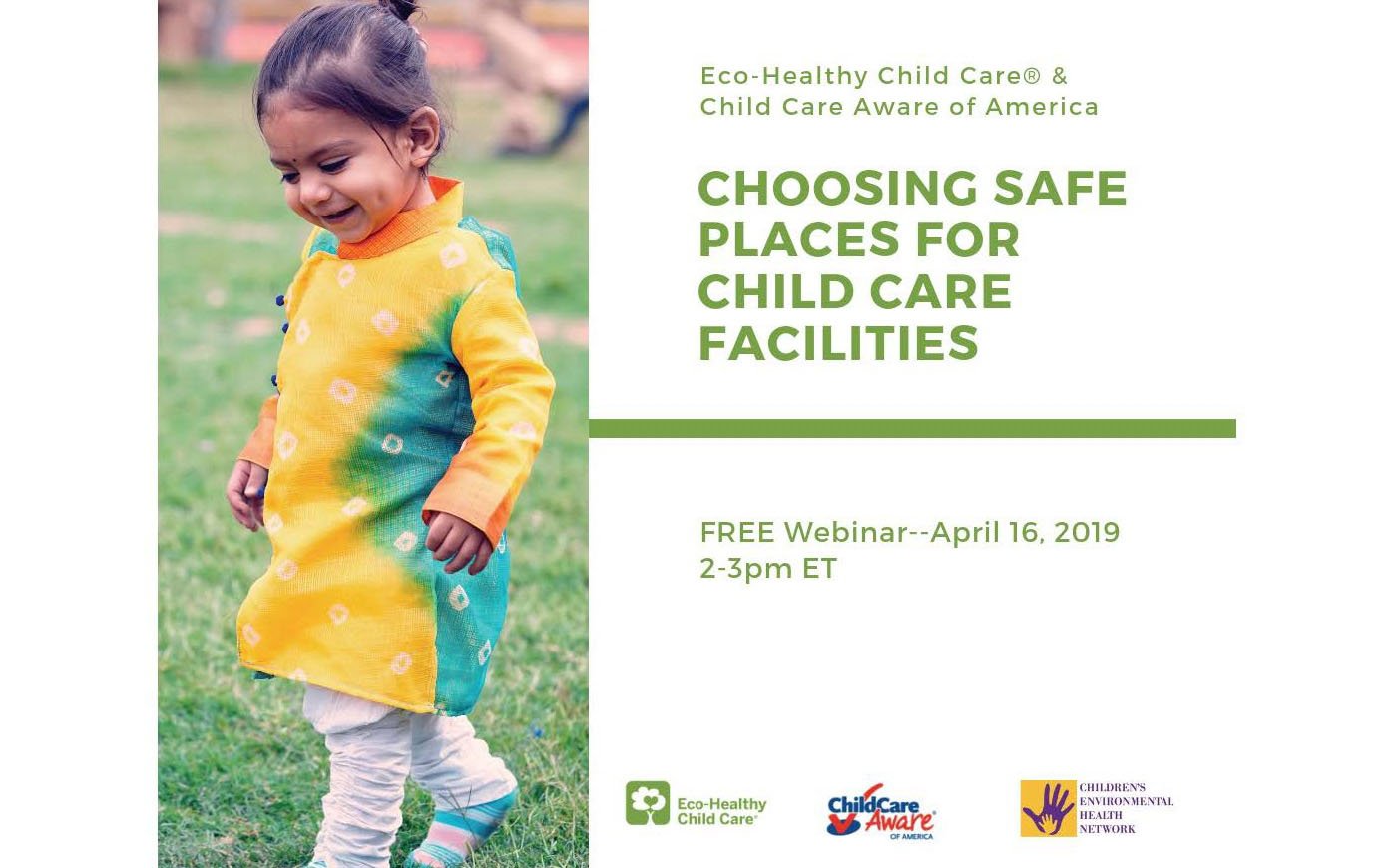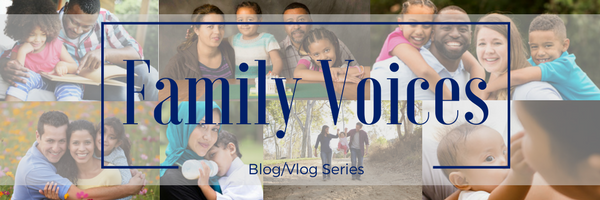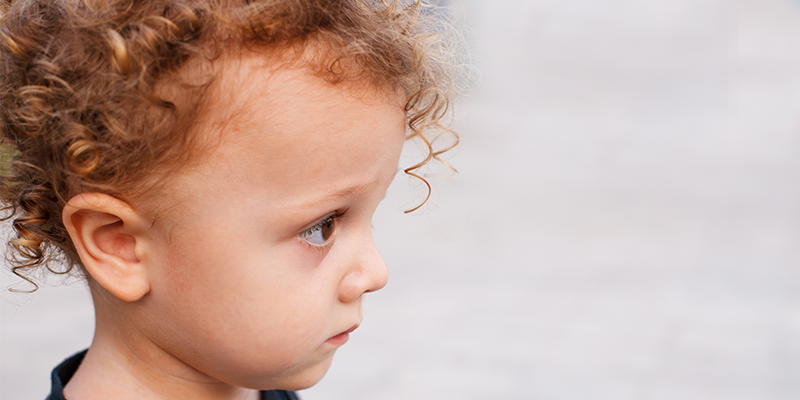
When we think about health and safety in child care, it’s often related to hazards we can see. For instance, are providers and children washing their hands properly? Have cleaners and medications been locked away? Are smoke and carbon monoxide detectors present and functional? These are things that can affect children’s wellbeing right now.
At Child Care Aware® of America (CCAoA), we’ve been thinking about health and safety in a new way. To create safe and healthy child care programs, we need to consider both hazards we can see and those we cannot. That means thinking about children’s health and wellness right now and in the future.
In the first post of this blog series, we gave you tips to reduce the use of toxic chemicals in child care programs. All April, we will be exploring environmental health— hazardous materials, parking lot safety, safe facilities — from this new point of view. And we offer new ideas about how to avoid hidden hazards and promote children’s lifelong health.
Why Location Matters
Child care providers have a lot to consider when choosing a site for their program. There’s cost, location, suitable indoor and outdoor space, and so on. The issue of environmental contamination may not occur to them. There may be no visible problem or telltale smell, so it’s easy to overlook. But children deserve safe spaces to learn and play. Child care providers must make sure their facilities are free of environmental hazards.
Here’s why:
Contaminants in the air, soil and water can harm child and staff health. Young children often play on the ground, which makes exposure to environmental hazards more likely and more dangerous. Many environmental hazards, including lead and pesticides, are bad for children’s growing brains and bodies. Exposure to these toxins can set children up for a lifetime of health problems. Child care staff are also at risk. Particularly those who are pregnant, have chronic health conditions or live in a family child care home with high levels of contamination.
Safe siting in child care means thinking about environmental hazards before choosing to open a facility on a certain site. Experts in safe siting recommend that child care providers ask four important questions before selecting a child care site:
1. What was the site used for in the past?
Industrial chemicals can remain in the soil and groundwater for years. Say a child care site used to house a dry cleaner; An infant doing tummy time on the floor might breathe in vapors from chemicals that seeped beneath the building long ago.2. How close is the site to other sources of harmful chemicals and can those substances spread to affect the site?
Chemicals from farms, gas stations and other businesses can travel by air and water to nearby properties. Fumes and exhaust from a local gas station, for instance, might trigger an asthma attack in a child playing outdoors.3. Are naturally-occurring harmful chemicals present?
Radon is a naturally-occurring gas that can seep into basements. A family child care provider and the kids she cares for in her basement might face an increased risk of lung cancer from long-term radon exposure.4. Is the water in sinks and drinking fountains safe and clean?
Pesticides from farm runoff and lead in old pipes can make their way into drinking water. A pregnant teacher might miscarry from drinking too much lead-contaminated water.When thinking about safe siting, remember that environmental hazards are not distributed evenly. Communities with low incomes and communities of color are disproportionately located in areas with high rates of environmental contamination. These communities often have limited political power or access to resources for hazard removal. We need ensure that the communities most at risk, have funding to make their neighborhoods and facilities safer for children.
What can CCR&Rs do?
- Convene a diverse group of stakeholders. Include state departments of education, public health, environmental safety, housing and child care. Identify opportunities for stakeholders to coordinate and align messaging around the importance of limiting exposure to environmental hazards wherever children live, learn and play. CCAoA can support your coalition-building by helping you get the right people in the room. We can also help you use research to make community-informed decisions about how to promote safe siting.
- Build safe siting into pre-licensure training for new child care providers. Also add the "Choose Safe Places checklist" to pre-licensure health and safety inspections. Caring for Our Children Basics recommends an environmental assessment of a child care site before it opens. Connecticut, for example, has built environmental screening into its pre-licensing and licensing renewal systems. CCAoA can conduct policy scans and analysis to help you learn what other states are doing and think through how to adapt or replicate in your state.
- Partner with state or local health departments to provide training and technical assistance to providers about how to choose a new site or minimize exposure in their current facility. Include information about:
- Who in your area does environmental testing
- What can be done toward remediation of hazards or to limit exposure
- Whether there are programs available to help offset any costs
- Subscribe to CCAoA’s monthly Health Round-Up newsletter to stay current on the latest scientific research and what it means for child care practice and policy.
- Advocate for funding to clean up environmental contamination in local communities. This is especially needed for neighborhoods with limited access to resources and political power. Work with CCAoA to build a story map showing environmental hazards in your state and their proximity to child care programs. The map can build a compelling case for policy solutions.
Join Our April 16 Webinar: Choosing Safe Places for Child Care Facilities
Child Care Aware® of America is teaming up with the Children’s Environmental Health Network (CEHN) to spread the word about safe siting in child care and highlight opportunities for CCR&Rs to get involved. Join us for a webinar highlighting the Choosing Safe Places for Early Care and Education initiative and hear from a CCR&R in New Jersey about their experience helping providers keep kids safe from environmental hazards.






